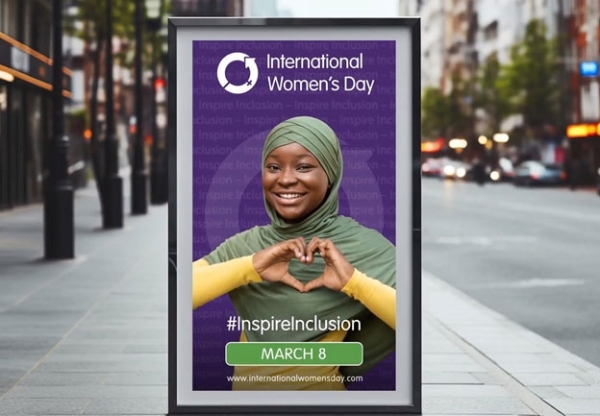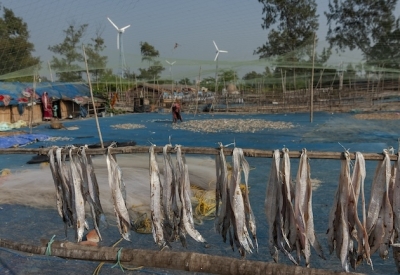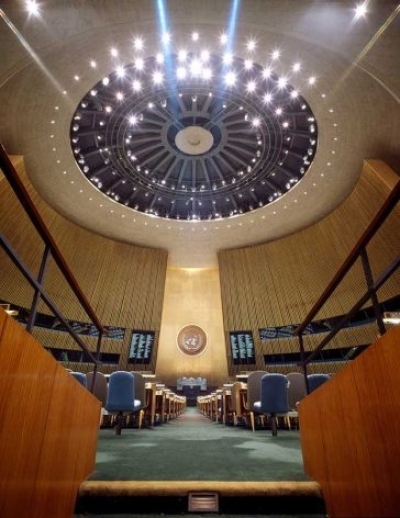NEW YORK, Mar 06 (IPS) — Recently “Days of Our Lives” star Arianne Zucker sued former co-executive producer Albert Alarr, accusing him of sexual harassment on the set of the long-running daytime show.
The complaint, filed 7th February 2024 in California Superior Court, alleges Alarr repeatedly subjected Zucker and other “Days” employees to “severe and pervasive harassment and discrimination, including sexual harassment, based upon their female gender.”
Since the #MeToo movement began in 2017, workplace sexual harassment has received a great deal of media attention, but attention towards the diversity of the women victimized by sexual harassment is greatly lacking.
Sexual harassment survivors most often sourced in #MeToo-related stories by the media are wealthy white (Caucasian) women who made complaints against senior male executives in the entertainment industry or in politics—think of high profile coverage of Harvey Weinstein’s long history of sexual assault and harassment of women, including actresses Rose McGowan, Ashley Judd, Angelina Jolie, and Gwyneth Paltrow, as well as the news about Gretchen Carlson’s sexual harassment claim against Fox News.
However, these cases are neither relatable to the average American woman’s experience of workplace sexual harassment nor representative of the reality and the severity of sexual harassment as a widespread social problem.
In contrast, the women of color sexually assaulted by Weinstein, including Kenyan-Mexican actress Lupita Nyong’o and Mexican-American actress Salma Hayek, did not receive the same media coverage or public response as white women who made similar allegations. The result is that the public perception of sexual harassment is predominantly associated with white women from middle- and upper-class identities.
This perception was mainly created by the media with its focus on stories of white women, in addition to the lack of diversity in the movement.
Approximately 81% of women have faced sexual harassment in their lives. Despite these high numbers, the overwhelming majority (99.8%) of people who experience sexual harassment at work never file formal charges. Women of color are more likely to experience sexual harassment, yet less likely to report it.
There’s a long way to go until women feel comfortable reporting sexual harassment in the workplace and feel confident in their employers that repercussions will occur.
Historically, the media stereotyped women of color and created a public perception that the impact of sexual harassment on them was not as severe as on white women. To some extent, this perception has to do with the historical context of how women of color endured through slavery, colonization, world wars and conflicts throughout history and how they were portrayed by the media.
During the period of slavery in America, white society overtly believed black women to be innately lustful beings. After the Philippine-American War, World War II, and the Korean and Vietnam Wars, the US occupation of Asian countries propelled local sex industries and sex trafficking rings to serve soldiers.
The media has repeatedly represented East Asian women in a harmful way through its exaggerated portrayal of the China Doll and Dragon Lady to further exoticize and dehumanize East Asian women, ensuring the dominance of the West. Latinas historically endured rape as part of European colonialization of Latin American countries by Spaniards.
The stereotypical depictions of hyper-sexual Latinas in the media suggest that Latinas have a higher tolerance for sexual advances in the workplace. Meanwhile, historically, white women were portrayed as models of self-respect, self-control, modesty, and even sexual purity.
Media stereotypes have a direct impact on cultural perceptions of women of color. This aspect is further aggravated by how the media objectifies women of color in TV shows, movies, and advertisements. These stereotypes tend to justify sexual harassment of women of color in real life.
Racial bias in the media attention on sexual harassment is very harmful to women of color and women from minority groups. The US media’s lack of committed reporting on sexual harassment cases of women of color contributes to the silencing of its existence as well as preventing from tackling it.
This biased, non-inclusive approach of the media creates an environment that is conducive to continuing sexual harassment of women of color. It also silences those affected women of color and discourages them from reporting sexual harassment or asking for support through any available mechanisms.
During the period from 2018 to 2021, women filed 78.2% of the 27,291 sexual harassment charges received by the Equal Employment Opportunity Commission (EEOC). Of the 1,945 sexual harassment charges filed concurrently with a race charge, 71.2% designated Black/African American and another 4.8% designated Asian as the relevant race. Data from the EEOC reflects that 56% of sexual harassment charges are filed by women of color; yet women of color only make 37 percent of women in the workforce.
According to the survey by the National Asian Pacific American Women’s Forum (NAPAWF) in 2022, overall, in the last 12 months, a staggering 74% of AAPI women personally experienced racism and/or discrimination, 38% experienced sexual harassment, and 12% reported experiencing gender and/or race-based physical violence.
There is also another factor why the media is paying more attention to white women through #MeToo movement. This is because white women (and men) are far better represented in the US media than women (and men) of color. For instance, the proportion of all journalists who are white men and white women is 52.12% and 31.04%, respectively.
The comparable figure for black men and black women, respectively, is 3.02% and 2.62%, while the overall figure for non-white men and women (i.e. Black, Hispanic, American Indian, Asian, Hawaiian Pacific Islanders and others), is 8.58% and 7.95%, respectively.
One in five people in the US is a woman of color (i.e. women who identify as non-white) as women of color were 20.3% of the US population in 2021. However, their stories are rarely told in the media while women of color are underrepresented in the media.
It is now more than thirty years since Kimberlé Crenshaw critiqued anti-discrimination law for its failure to recognize intersectionality, the compounding nature of race and gender subordination. Despite this, the US media still considers the issue of sexual harassment as an individualized problem of inappropriate behaviour rather than a systemic issue of inequalities of gender, race, and power.
This is why the media sees that the sexual harassment cases of white women survivors are more newsworthy than those of women of color.
The media should be part of the solution rather than a problem in addressing and preventing sexual harassment in the workplace. The combined influences of race and gender on sexual harassment should be identified and addressed immediately by the media with greater attention to the experiences of women of color and women from minority groups.
The media has the power to implement changes in whose stories are told. The US media should demonstrate a conscious and continued effort to provide equal representation in covering sexual harassment cases that is inclusive of all types of survivors, including women of color.
Shihana Mohamed is one of the Coordinators of the United Nations Asia Network for Diversity and Inclusion and a Public Voices Fellow with The OpEd Project and Equality Now on Advancing the Rights of Women and Girls. https://www.linkedin.com/in/shihana-mohamed-68556b15/
IPS UN Bureau






